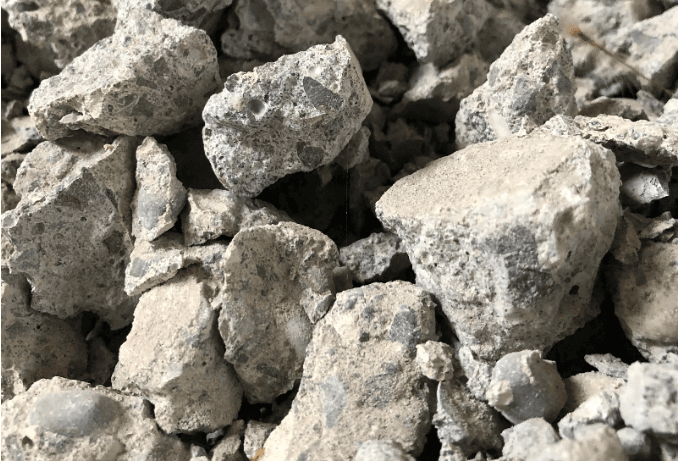These improvements are applied to reinforce the quality of the materials and their use as an alternate granular material to produce bases and subbases. The process capitalizes on the capacity of recycled concrete aggregates to absorb CO2, and it improves on the physical properties of recycled aggregates.
This way, the final product would be able to substitute high proportions of non-renewable natural aggregates that deplete natural resources.
“This project aims to create value and promote the use of concrete derived from demolition waste of end-of-life infrastructure and give it a second life and make it revalorized material”, explained Victor Fabian Armijos, Head of the Innovation department at Sacyr Chile.
"This project development, awarded to the Universidad de La Frontera (UFRO) through a FONDEF (Fondo de Fomento al Desarrollo Científico y Tecnológico) project from a R&D IDEA contest, involves the collaboration between the academic, industry and public sector", said Dr. Viviana Letelier, professor at UFRO.
Sacyr Chile will oversee the characterization of raw materials and concrete waste and the experimental assessment in the field regarding the mechanical performance of recycled aggregates as the base or subbase granular material.
The project will be carried out in collaboration with Revaloriza, which is responsible for classifying and producing this recycled aggregate at its CDW revalorization facility.
“We have carried out the lab tests on this material with the support of our self-assessment lab on project sites to meet the requirements so that it qualifies as an alternate base or subbase material”, explained Victor Fabian.
Over the next few weeks, we will execute the verification and validation of this material made of recycled aggregates to be used on site, once verified, and validated both by the University in charge of the project, as well as the client (Ministerio de Obras Públicas - MOP) in order to implement the test run section, on the Ruta 66, Camino de la Fruta.
Sacyr Chile is also working on the development of a new kind of concrete from revalorized glass. The latest results obtained in the lab demonstrate that, in average, glass increases the mechanical resistance of concrete by 13.4% at 28 days, as well as its durability.
